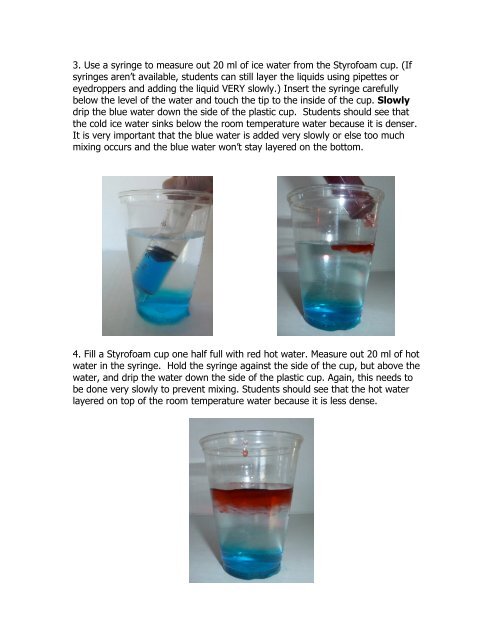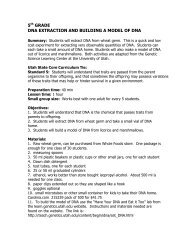6th Grade Conduction, Convection, and Stored Heat Energy
6th Grade Conduction, Convection, and Stored Heat Energy
6th Grade Conduction, Convection, and Stored Heat Energy
Create successful ePaper yourself
Turn your PDF publications into a flip-book with our unique Google optimized e-Paper software.
3. Use a syringe to measure out 20 ml of ice water from the Styrofoam cup. (If<br />
syringes aren’t available, students can still layer the liquids using pipettes or<br />
eyedroppers <strong>and</strong> adding the liquid VERY slowly.) Insert the syringe carefully<br />
below the level of the water <strong>and</strong> touch the tip to the inside of the cup. Slowly<br />
drip the blue water down the side of the plastic cup. Students should see that<br />
the cold ice water sinks below the room temperature water because it is denser.<br />
It is very important that the blue water is added very slowly or else too much<br />
mixing occurs <strong>and</strong> the blue water won’t stay layered on the bottom.<br />
4. Fill a Styrofoam cup one half full with red hot water. Measure out 20 ml of hot<br />
water in the syringe. Hold the syringe against the side of the cup, but above the<br />
water, <strong>and</strong> drip the water down the side of the plastic cup. Again, this needs to<br />
be done very slowly to prevent mixing. Students should see that the hot water<br />
layered on top of the room temperature water because it is less dense.




